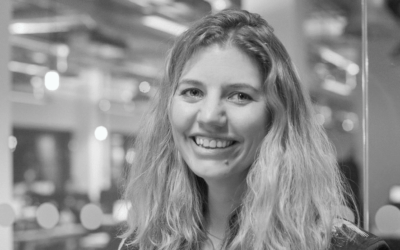Andy Buchan, creative director at The Neighbourhood, gives his take on why offering staff free time to create their own projects can lead to profitability in the long run.
Big business and innovation – can it work?
Earlier this month, we were invited to attend Deep Orange, a global design thinking programme hosted by design and consultancy firm Arcadis. Hosted at Enterprise City, the event brought together around 50 participants from a number of large businesses, including Manchester Airport, HSBC, Lloyds Bank and Greater Manchester Combined Authority, as well as business consultants from Accenture and creative types like us.
The focus of the event was to help these large organisations use innovation and design-thinking to implement change, identify opportunities and overcome genuine issues they’re facing.
Keeping up with the startups
When it comes to innovation, large companies often fall behind because their success so far has been based on efficiency, profit and process. Not innovation. Refinement, not revolution.
So in a world of fast-moving, innovative start-ups, they’re struggling to keep up.
What does it take to drive innovation?
First, it requires a recognition that the people you hired yesterday might not be the innovative, creative thinkers you want today. And to encourage innovation, there must be space unencumbered by the usual structures and processes. A space where creative, innovative thinking can thrive.
We’ve seen large businesses – our own clients, in fact – overcome this by creating a separate department, solely responsible for innovation. They tend to fill it with new hires, put them in a different space and keep them removed from the day-to-day processes of the main company. Because when companies try and implement the same processes they use for core products on their innovation team, it invariably fails.
Ultimately, innovation has to be the product of passion, not the outcome of calculation. Results can’t be tracked on spreadsheets, and can be hard to immediately quantify – something that rankles with a typical CFO.
A happy, productive workforce
Hiring top talent, especially people who want to work for an innovative company, can be difficult for large corporate firms. This is where culture and wellbeing come in. Companies like Google spend a lot of time, money and resource on making sure their employees are happy and productive. And they use hard data to track people’s wellbeing – they even know the ideal length for the cafeteria queue. Thanks to this data tracking, Google found that simply warmly greeting new employees increased productivity by 15% over nine months.
The fact that large organisations recognise the need for innovation and design-thinking as a way to solve problems and create opportunities is fantastic. But they need to make some pretty big changes to the way they behave, operate and hire in order to give innovation any chance of success.
Old processes, profit-hungry CFOs and jaded employees must move aside to allow room for innovation to grow and flourish. Because only then will large organisations be able to stay ahead of the hungry startups biting at their heels.
To have your take on a particular issue, email [email protected]









